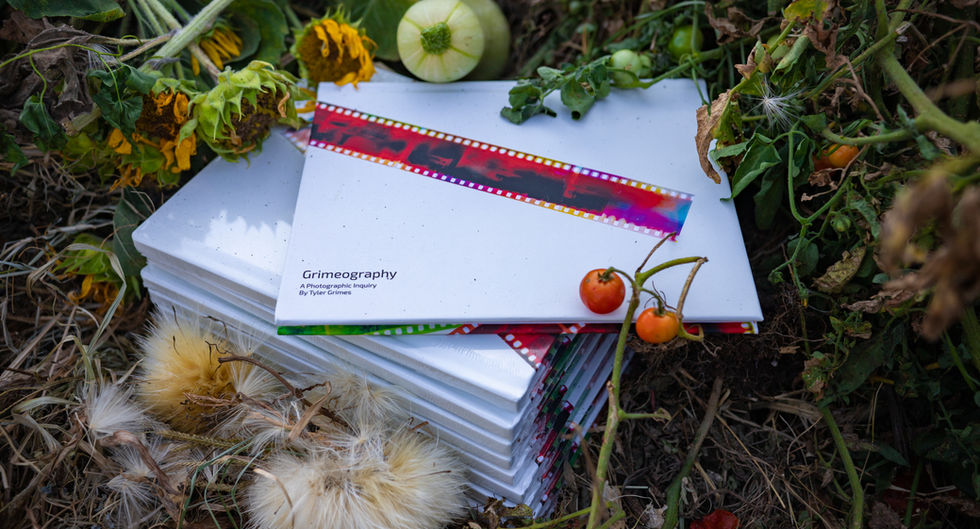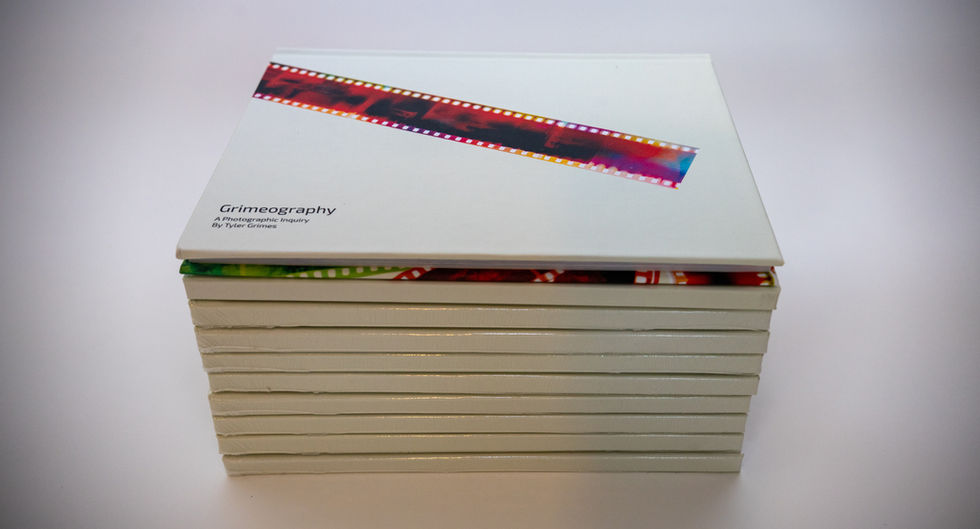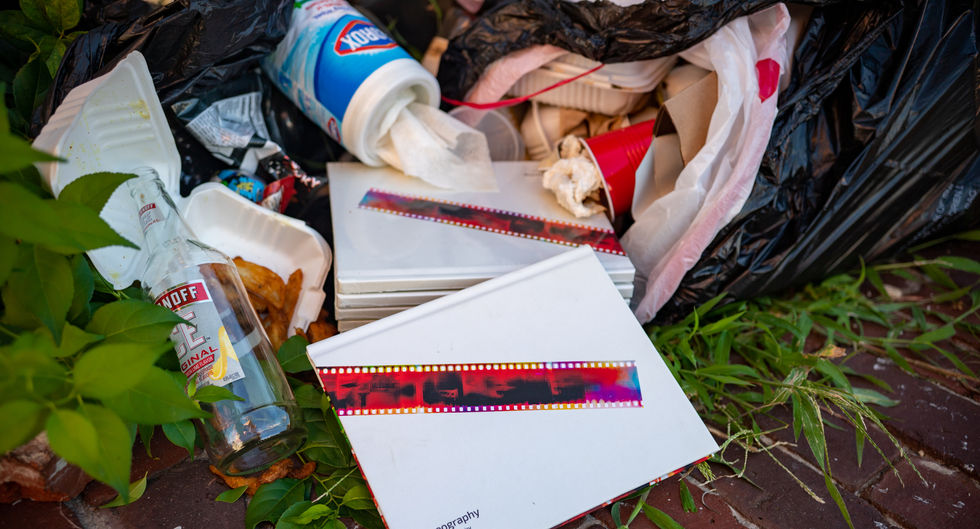Grimeography : A photographic inquiry
Grime (noun): “Dirt, soot, clutter, or other filthy matter, especially adhering to or embedded in a surface”.
Grimey/grimy (adjective): “Full of or covered with grime; most times an object or in some cases a person”.
-ography (suffix): “a field of study, a particular area of interest; a process”.
Grimeography (noun): “The study, appreciation, and observation of grime in its various manifestations".
The photobook can be ordered and previewed below or through this link.
It is hosted through Blurb.
Single image prints are available,
contact me if you're interested.
Documentation
Project Statement
I choose Grimeography as my moniker in a conscious effort to become more acquainted with and appreciate the materialization of grime. This photographic inquiry bears the same name and intent. Through a photographic probing of the relations that grime has to the world around me, I’ll give decomposition and decay a new context and explore the parts of our culture that are often overlooked – the unsultry but useful, the faded but faithful, the decaying but delightful. My chosen medium-message of analog film photography and its paper-bound container in this book are fitting mediums to tell the story, as they too will fade with time. Naturally, grime is something I find to be poetically symbolic and worth photographing. I’m attempting to document this grimeyness via a portrait of our absurdly anthropocentric culture and the human and nonhuman agents it affects.
Grimeography also aims to reassess the concept of nature. I’ll reframe it from the nostalgia of a ‘thing over there’ to the here and now by spotlighting the fermenting fruits of society as to ponder what sort of embodied energies they might hold within. Some of these grimey observations are inspired by speculative notions surrounding human relations to objects. This school of thought - Object-Oriented Ontology - seeks to reject paradigms that privilege human existence over the existence of nonhuman objects. This perspective questions the dichotomies of subject versus object, nature versus culture, ‘yours versus mine’ and human versus nonhuman. Inspiredly so, Grimeography posits a ‘flat ontology’ in which all things exist equally. As one flips through the book, I’ll challenge these human-first hierarchies as images of trash cans, weeds and grime show that there is a beautiful story to be told behind every object and its relations.
There are concepts within Eastern mysticism and Indigenous knowledge surrounding the life-force of objects that conceive of similar worldviews. These perspectives speak to the importance of objects as sources of contemplating the magically mundane of the everyday and surely inspired me to pursue such narratives. These objects could include the process of grime itself, germs, vines, a body of water, a person experiencing homelessness, a failing economic-political system, a virus, this book, the photons of light hitting this page, the pupil reflexing to those changes in light, graffiti on a building, the building itself, a rusted “no trespassing” sign on a fence around the building that separates it from the non-fenced, the buildings’ builder, the atoms that form the builder, the grammatical structure of this run-on sentence, ideas/dogmas about such topics, etc. Perhaps this challenging way of seeing may allow the spectator to contemplate that reality might be a flowing and interconnected mesh of a greater whole.
What happens if one lets grime thrive? What might be gained by letting the garden push into urban areas? Seeing how our culture is headed towards the unspeakable, this could be part of the archaic revival needed to reconsider our impact on the environment. Decay, decomposition, and the emergence of grime are processes that reliably and cyclically engender new life – yet they are undeservedly and notoriously viewed as futile. Fungi, bacteria, and the various microorganisms inhabiting the ruins of modernity could help remind us of this ebb and flow of the wilderness. Despite modern capitalist-cultural mythologies surrounding the urgency of overly sterile environments, these life forms could be productive for their environments. They are much like the process of composting, which replenishes our nutrient-less soil. The earth will eventually reclaim these manufactured structures, much in the same way it reclaimed the structures of the ancients and other areas of human intervention as if it is feeding on a diet of brick and mortar. These anarchic lifeforms help uproot ideals that are founded on the human propensity to tame relations between objects. Therefore, wild urban plant growth shouldn’t be seen as a sign of ruin, but rather a symbol of entropic renewal - a second chance. Why not let these structures and objects (of thought and substance) decompose? Through the reframing and preservation of the fragile relations between the grime and ‘un-grime’ as something that has been wrongfully and historically the background to the foreground presence it deserves;
Grimeogaphy aims to re-mind its viewers.



































